Remember those family dinners around the Formica table, with Mom bringing out steaming dishes that defined our childhoods? The 1970s were a culinary adventure of convenience foods, aspirational entertaining, and recipes passed down through magazine clippings. While some classics have stood the test of time, many of our cherished dinner staples have quietly faded from America’s dinner tables, relegated to nostalgia rather than nightly rotation.
1. TV Dinners in Aluminum Trays
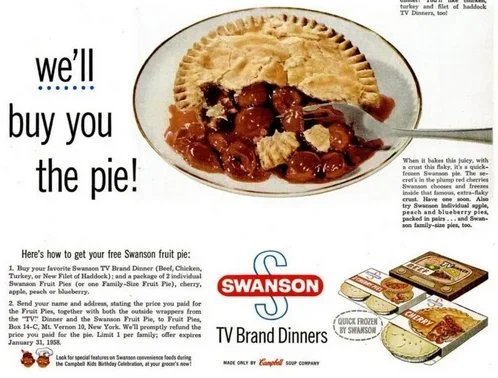
Those compartmentalized aluminum trays were practically a food group unto themselves, with that distinctive metallic taste somehow enhancing the experience. The ritual of unwrapping the foil, revealing the precisely portioned salisbury steak, mashed potatoes, and that unnaturally bright dessert cobbler was the height of modern convenience. They allowed us to eat in front of “The Carol Burnett Show” or “Happy Days” without Mom’s usual protests about proper table manners. CNBC reflects on the ways TV dinners transformed not just our dinner tables but cooking itself in American kitchens.
Swanson dominated the market with their clever marketing that transformed frozen meals into an American institution, not just a convenience. The three-compartment design kept your corn from mingling with your brownies, solving the age-old problem of food touching that plagued picky eaters nationwide. When microwavable plastic trays replaced the aluminum versions in the ’80s, something indefinable was lost—the anticipation of removing that piping hot tray with potholders and the satisfying crinkle of the foil as you peeled it back.
2. Fondue Parties
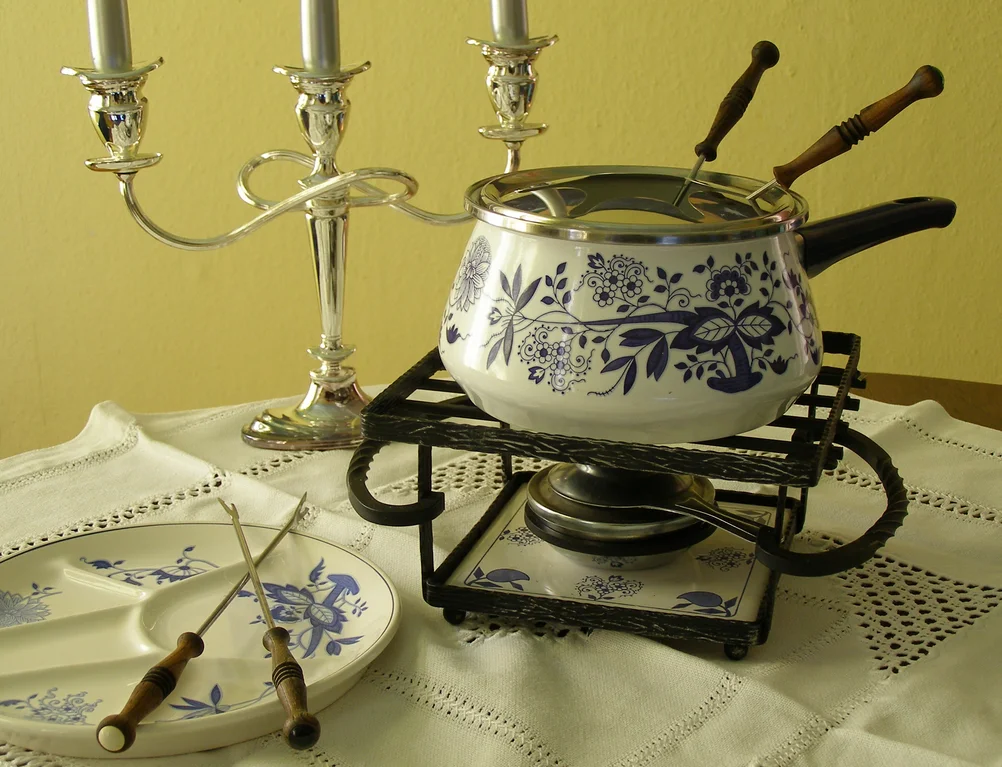
Nothing said “sophisticated entertaining” quite like gathering friends around a bubbling pot of cheese or oil for a fondue party. Couples would cluster around the pot, color-coded fondue forks in hand, dipping chunks of crusty bread or skewered meat while sipping on glasses of Mateus Rosé. The Swiss tradition transformed American dinner parties into interactive social experiences, with unspoken rules about what happened if your bread chunk fell off in the communal pot. San Francisco Chronicle notes that fondue parties are enjoying a comeback in pockets across the country.
Fondue sets were the must-have wedding gift of the decade, complete with their special pots, burners, and those long-handled forks that prevented burnt fingers. As the decade progressed, chocolate fondue appeared as a dessert option, elevating the humble strawberry to gourmet status when dipped in a velvety chocolate bath. The fondue phenomenon faded as quickly as it arrived, with most sets relegated to the back of kitchen cabinets, gathering dust alongside avocado green canisters and macramé plant hangers.
3. Beef Stroganoff with Hamburger
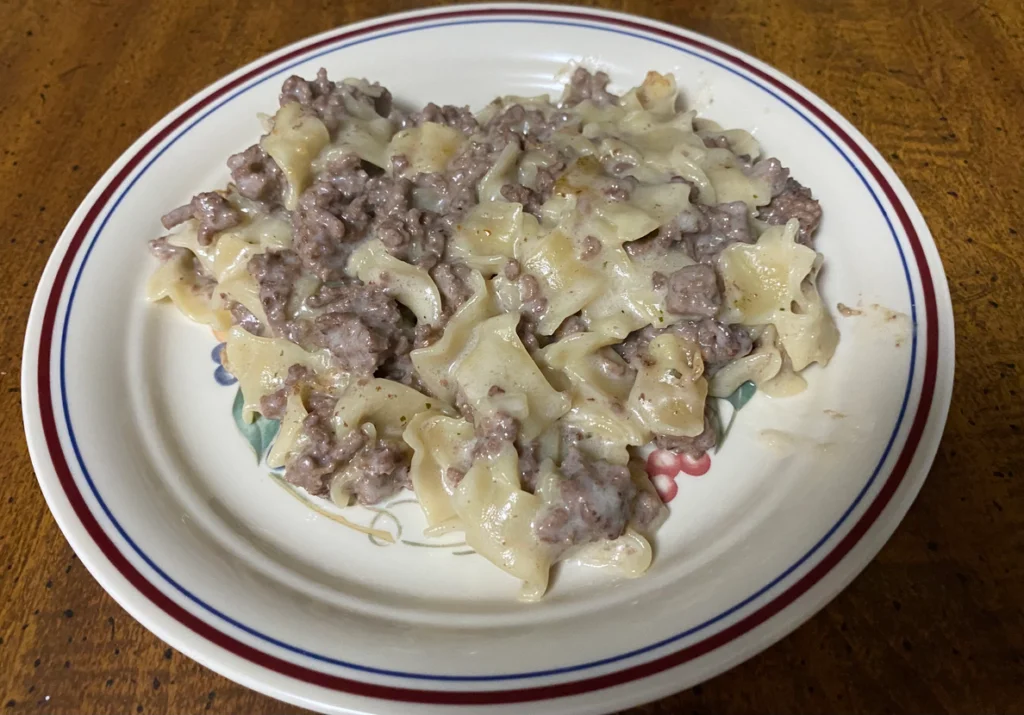
This Americanized version of the Russian classic became the go-to dinner party dish for budget-conscious hostesses wanting to impress without breaking the bank. Ground beef replaced the traditional sliced beef tenderloin, while cream of mushroom soup stood in for the more labor-intensive sour cream sauce, creating a dish that was simultaneously exotic and accessible. Served over egg noodles with a sprinkle of chopped parsley for color, it transformed humble hamburger into something company-worthy. Capital Farms also explores how it started and just how this dish has evolved into the version we recognize most.
The dish appeared in countless community cookbooks and on typed recipe cards shared between neighbors, each with slight variations—some added a splash of cooking sherry for sophistication, others mixed in a dollop of ketchup for tang. As American palates expanded beyond continental cuisine in the ’80s and ’90s, beef stroganoff began its slow fade from dinner party menus, replaced by stir-fries, pasta primavera, and other more cosmopolitan fare. Today, it exists primarily as a nostalgic reminder of a time when sour cream and canned soup could transform any dish into something special.
4. Porcupine Meatballs
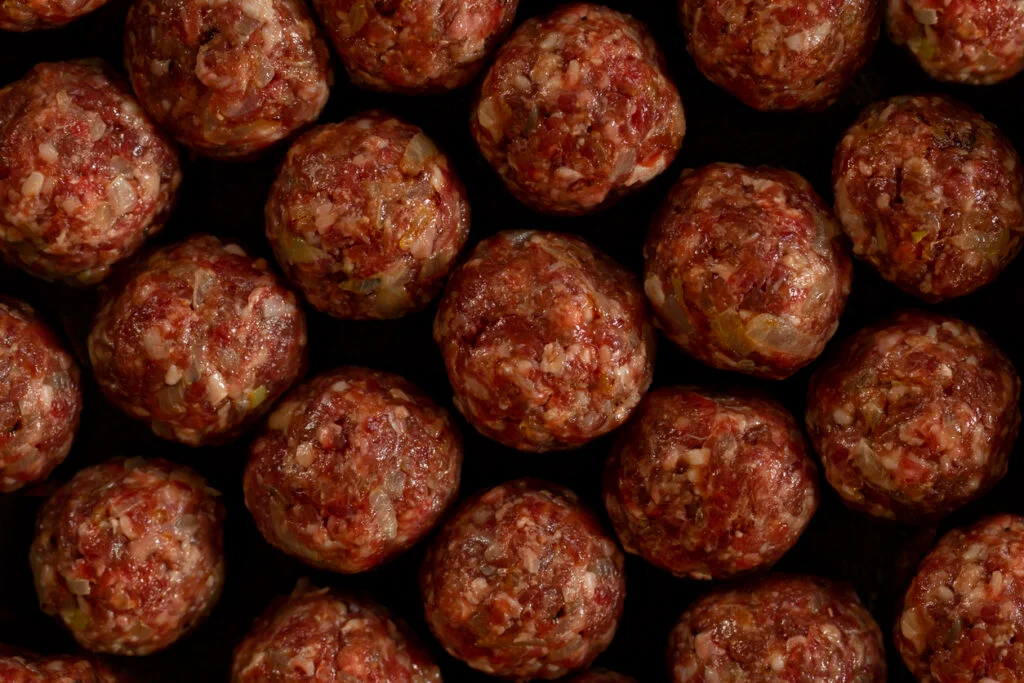
These whimsical meatballs got their name from the rice that stuck out like quills as they cooked in tangy tomato sauce. They stretched a pound of ground beef to feed a family of five, combining meat with uncooked rice, onions, and seasonings before simmering everything until the rice absorbed the savory flavors. Moms nationwide appreciated the budget-friendly nature of this dish, which often cost less than a dollar per serving to prepare.
Campbell’s soup played a starring role in most recipes, with their tomato soup serving as the perfect cooking liquid that transformed into a thick sauce as the rice expanded. Children delighted in the name and the fun presentation, often requesting “porcupines” for dinner without realizing they were eating a cleverly disguised economical meal. As more dual-income families emerged and time became more precious than money, these time-consuming simmered dishes gave way to quicker meals, and porcupine meatballs retreated into the recipe boxes of yesteryear.
5. Chicken à la King in Patty Shells
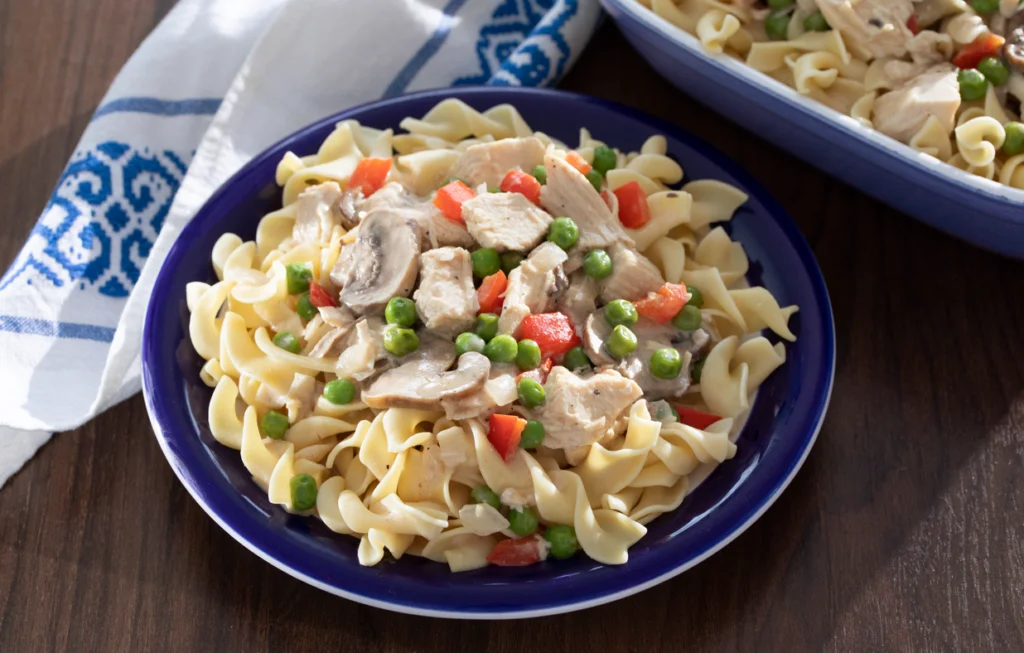
Presenting creamed chicken in delicate puff pastry shells elevated leftovers to elegant status in countless American homes. The combination of diced chicken, mushrooms, and pimentos in a rich cream sauce served in flaky pastry shells was the height of sophistication for bridge clubs and ladies’ luncheons across the country. Frozen patty shells made this dish accessible to home cooks who wouldn’t dream of attempting puff pastry from scratch.
The dish had an aristocratic air despite its humble ingredients, often made with leftover Sunday roast chicken transformed into Monday’s dinner party fare. Pepperidge Farm patty shells flew off supermarket freezer shelves, promising instant elegance to anyone who could operate an oven. As women entered the workforce in greater numbers and convenience foods shifted toward microwavable options, the time-consuming elegance of Chicken à la King began to seem fussy rather than impressive.
6. Tuna Noodle Casserole with Potato Chip Topping
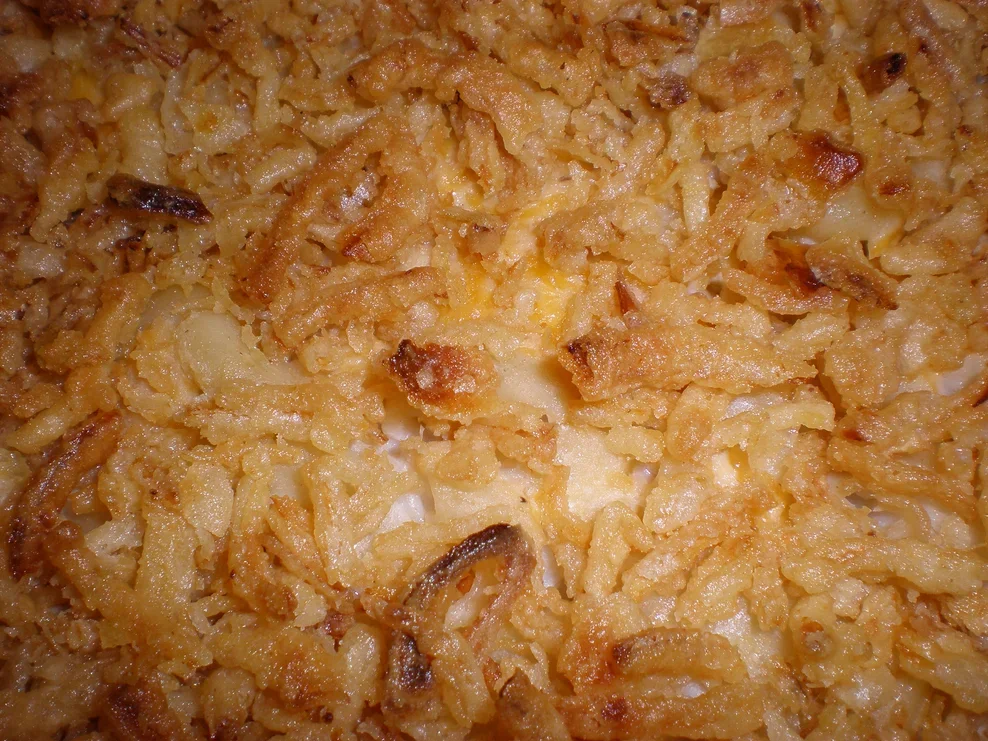
This budget-friendly staple combined pantry ingredients into a comforting one-dish meal that appeared weekly on American tables. Canned tuna, egg noodles, and cream of mushroom soup formed the holy trinity of ingredients, often supplemented with frozen peas for color and nutrition. The crowning glory was always the crushed potato chips on top, providing a salty crunch that complemented the creamy interior.
Church suppers and potlucks nationwide featured variations of this dish, sometimes jazzed up with water chestnuts for texture or pimentos for color. The convenience factor was unbeatable—ingredients could be kept on hand for emergencies, and the entire meal could be assembled in minutes before baking. As more sophisticated palates developed and concerns about sodium and processed foods grew, this beloved casserole began disappearing from regular rotation, though it still maintains a cult following among comfort food enthusiasts.
7. Quiche Lorraine

Originally a French dish, quiche became the sophisticated brunch and dinner party staple of the ’70s American hostess. The combination of eggs, cream, bacon, and Swiss cheese in a buttery crust appeared in gourmet magazines and dinner parties as Americans embraced continental cuisine. Women’s magazines featured countless variations, from spinach to seafood, positioning quiche as both elegant and accessible to the home cook.
The dish became so ubiquitous that it eventually sparked a cultural backlash, epitomized by the 1982 bestseller “Real Men Don’t Eat Quiche,” which poked fun at the feminization of American cuisine. What had been a dinner party staple became a symbol of pretension, causing hosts to second-guess serving it. As brunch culture evolved toward heartier fare like breakfast burritos and avocado toast, quiche’s prominence faded, though it occasionally resurfaces on retro menus and nostalgic gatherings.
8. Ham Steaks with Pineapple Rings
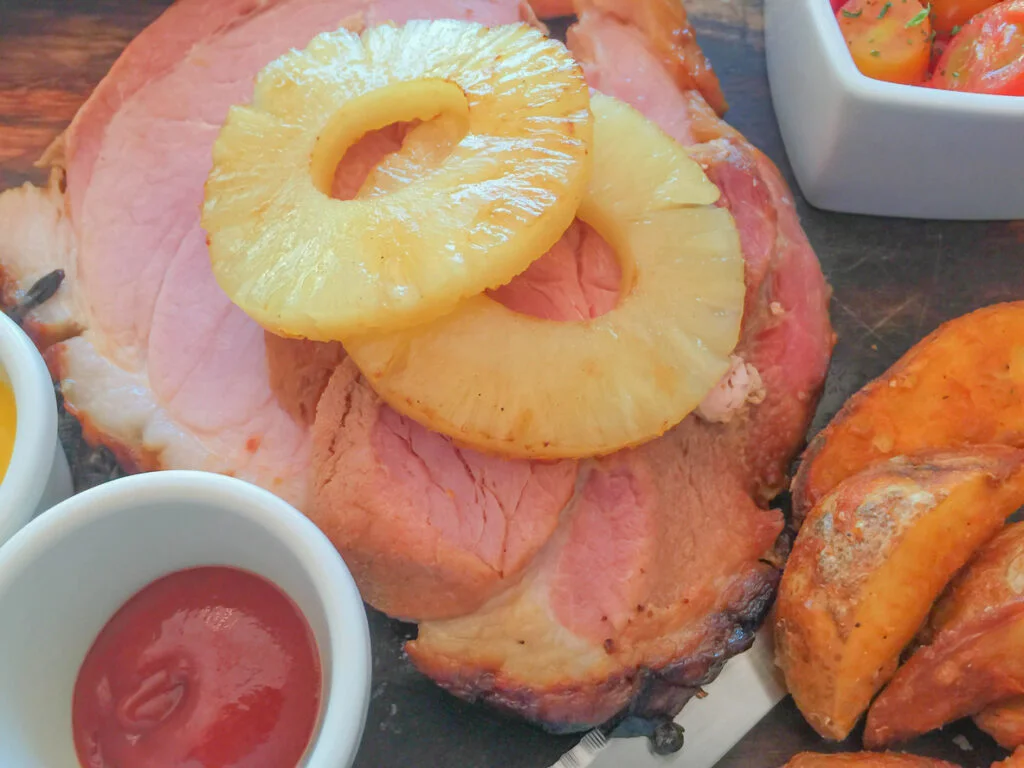
This visually striking combination of salty and sweet was a weeknight staple, particularly after holidays when canned ham was on sale. The bright yellow rings of canned pineapple, often secured with toothpicks and adorned with maraschino cherries, created a festive appearance that belied the simplicity of preparation. Served alongside instant mashed potatoes and canned green beans, it represented the pinnacle of efficient meal planning.
Cookbooks and women’s magazines featured artful arrangements of these ham and pineapple combinations, sometimes suggesting additional flourishes like clove studs or brown sugar glazes. The dish spoke to America’s postwar fascination with Hawaii, bringing a taste of tropical exoticism to Middle American tables. As health concerns about processed meats and sugary glazes grew, and as American palates developed beyond sweet-savory combinations, ham steaks with pineapple retreated from regular menu rotation.
9. Stuffed Bell Peppers
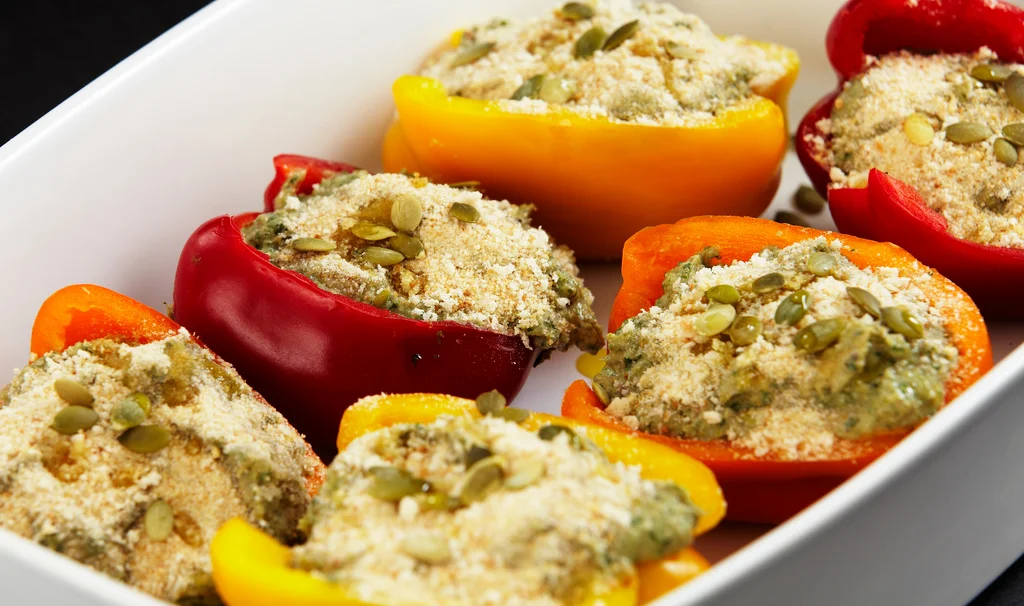
These edible vessels filled with a mixture of ground beef, rice, and tomato sauce were a clever way to stretch meat while incorporating vegetables into dinner. The hollowed-out green peppers stood like sentinels on dinner plates, their bright color signaling virtue long before “eating the rainbow” became a nutritional mantra. Moms appreciated how the meal contained protein, starch, and vegetable all in one neat package.
The preparation became a family affair in many households, with children helping to hold open the peppers while Mom spooned in the filling. Variations abounded—some families preferred red peppers for their sweeter flavor, while others added cheese toppings or substituted ground turkey as health consciousness increased. As casseroles fell from favor and individualized meals became the norm, the labor-intensive stuffed peppers appeared less frequently, though they maintain a nostalgic appeal for those raised on them.
10. Eggs Benedict with Hollandaise from a Packet

This brunch classic represented the pinnacle of at-home gourmet cooking, making the average homemaker feel like Julia Child. The combination of English muffins, Canadian bacon, poached eggs, and hollandaise sauce created a special-occasion breakfast that impressed overnight guests and holiday visitors. Knorr and other brands marketed hollandaise sauce packets that democratized this once-restaurant-only dish, allowing home cooks to skip the tricky emulsion process.
Magazine spreads featured elaborate brunch tablescapes centered around this dish, often suggesting champagne cocktails as the perfect accompaniment. The multi-step preparation became a point of pride for home cooks who mastered the art of poaching eggs and timing all components to arrive hot at the table. As brunch culture evolved toward avocado toast and shakshuka, and as health concerns about egg yolks and rich sauces grew, classic Eggs Benedict retreated to special occasions rather than regular weekend fare.
The disappearance of these once-universal dishes reflects not just changing tastes but the evolution of American family life. Our hurried modern schedules rarely accommodate the leisurely dinner rituals these dishes required, and our expanded culinary horizons have introduced flavors unimaginable to the average 1970s palate. Yet there’s something undeniably comforting about these retro recipes—they represent a time when dinner brought families together around the table, before devices and activities pulled us in different directions.


